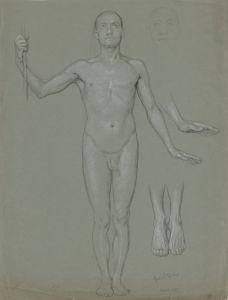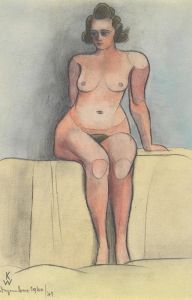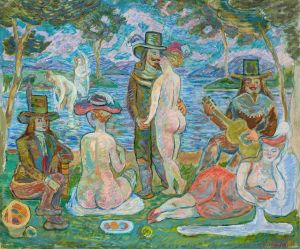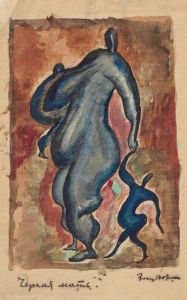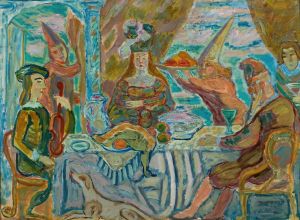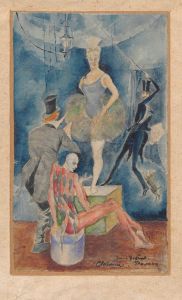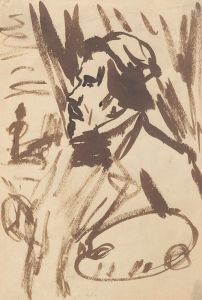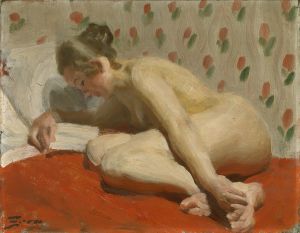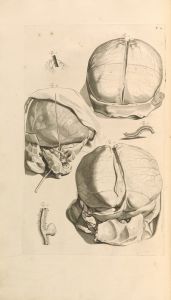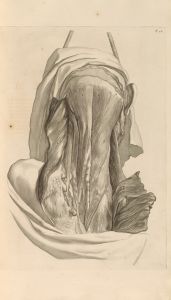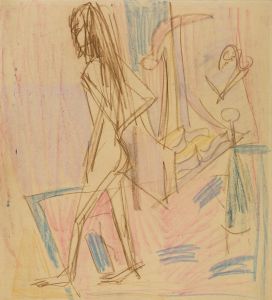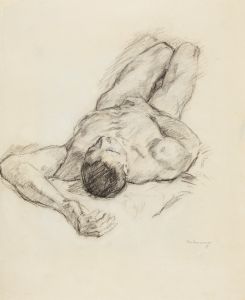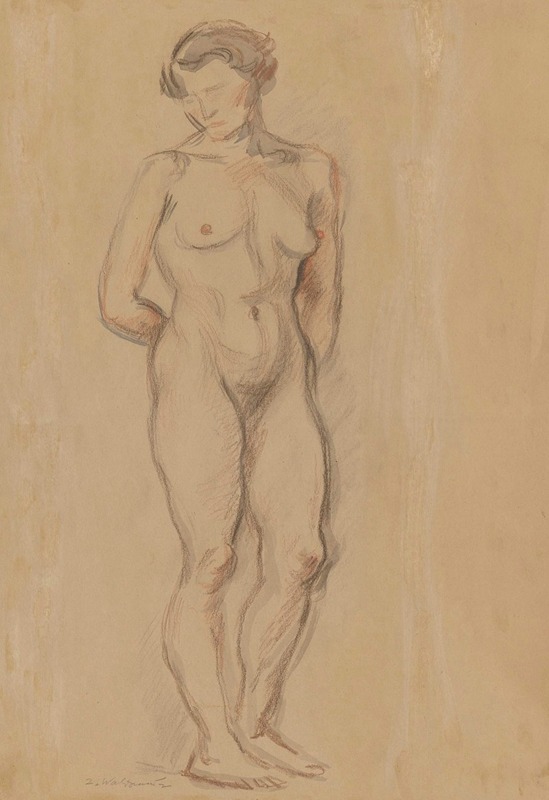
Standing nude
A hand-painted replica of Zygmunt Waliszewski’s masterpiece Standing nude, meticulously crafted by professional artists to capture the true essence of the original. Each piece is created with museum-quality canvas and rare mineral pigments, carefully painted by experienced artists with delicate brushstrokes and rich, layered colors to perfectly recreate the texture of the original artwork. Unlike machine-printed reproductions, this hand-painted version brings the painting to life, infused with the artist’s emotions and skill in every stroke. Whether for personal collection or home decoration, it instantly elevates the artistic atmosphere of any space.
Zygmunt Waliszewski was a prominent Polish painter known for his contributions to the art world in the early 20th century. Born in 1897 in Saint Petersburg, Russia, Waliszewski later moved to Poland, where he became an influential figure in the Polish art scene. He was associated with the Kapists, a group of Polish artists who were influenced by the Post-Impressionist movement and emphasized the importance of color in painting.
One of Waliszewski's notable works is "Standing Nude," a painting that exemplifies his style and artistic philosophy. Although specific details about the painting's creation, such as the exact date and the model's identity, are not well-documented, "Standing Nude" reflects Waliszewski's mastery of form and color. The painting is characterized by its vibrant palette and dynamic composition, which are hallmarks of Waliszewski's approach to art.
"Standing Nude" showcases Waliszewski's ability to blend traditional techniques with modernist influences. The use of bold colors and expressive brushwork in the painting highlights the artist's interest in capturing the vitality and essence of the human form. This approach aligns with the principles of the Kapists, who sought to move away from the somber tones and rigid structures of academic art, instead embracing a more liberated and colorful expression.
Waliszewski's work, including "Standing Nude," often draws comparisons to the Fauvist movement, particularly in its use of color and emotive power. The Fauves, a group of early 20th-century modern artists, were known for their radical use of color to convey emotion, a technique that Waliszewski adeptly incorporated into his own work. This influence is evident in "Standing Nude," where the interplay of light and shadow, combined with the bold color choices, creates a sense of depth and movement.
Throughout his career, Waliszewski remained committed to exploring the possibilities of color and form. His works, including "Standing Nude," are celebrated for their innovative approach and contribution to the development of modern art in Poland. Waliszewski's paintings are held in high regard and are part of various collections, both in Poland and internationally, where they continue to be studied and appreciated for their artistic significance.
In summary, "Standing Nude" by Zygmunt Waliszewski is a testament to the artist's skill and vision. It embodies the principles of the Kapists and reflects the broader trends in early 20th-century art, particularly the emphasis on color and expressive form. While specific details about the painting may be limited, its impact and importance in the context of Polish modern art remain undisputed.





